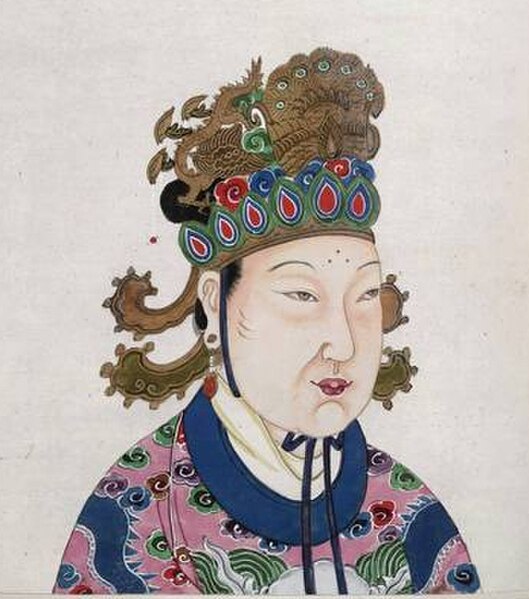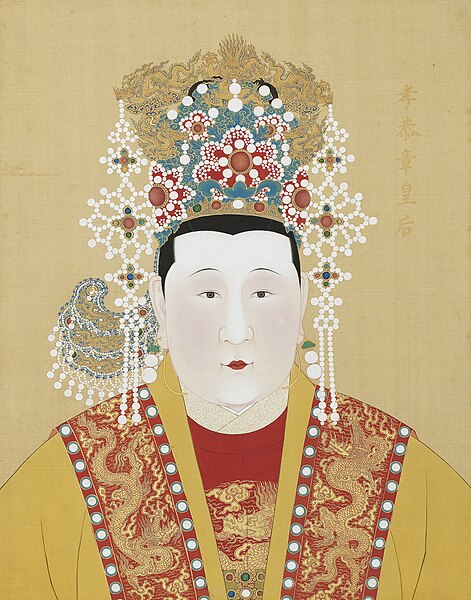Imperial Chinese harem system
The ranks of imperial consorts have varied over the course of Chinese history but remained important throughout owing to its prominence in the management of the inner court and in imperial succession, which ranked heirs according to the prominence of their mothers in addition to their birth order. Regardless of the age, however, it is common in English translation to simplify this hierarchy into the three ranks of empress, consorts, and concubines. It is also common to use the term "harem", an Arabic loan word used in recent times to refer to imperial women's forbidden quarters in many countries. In later Chinese dynasties, these quarters were known as the inner palace or the rear palace. In Chinese, the system is called the "rear palace system".
Empress Wu, better known as Wu Zetian, was a consort of Emperor Taizong and Emperor Gaozong of Tang
Empress Sun, better known as Empress Xiaogongzhang was an empress consort of the Xuande Emperor
Imperial Noble Consort Keshun, better known as Consort Zhen or popularly as the Pearl Consort, was a consort of the Guangxu Emperor
Women in ancient and imperial China
Women in ancient and imperial China were restricted from participating in various realms of social life, through social stipulations that they remain indoors, whilst outside business should be conducted by men. The strict division of the sexes, apparent in the policy that "men plow, women weave", partitioned male and female histories as early as the Zhou dynasty, with the Rites of Zhou, even stipulating that women be educated specifically in "women's rites". Though limited by policies that prevented them from owning property, taking examinations, or holding office, their restriction to a distinctive women's world prompted the development of female-specific occupations, exclusive literary circles, whilst also investing certain women with certain types of political influence inaccessible to men.
A bronze yi-vessel cast by a Marquis for his wife, Mengji (孟姬), a princess of Guo.
18th century illustration of Ban Zhao reading.
The Admonitions Scroll of the Jin dynasty (266–420), with texts providing advice to the women of the imperial court.
Ceramic models of Tang women playing polo and wearing trousers.







